From the ![]() Sweets Issue
Sweets Issue
“Half-pound of badam barfi, a dozen jalebis, and one-pound of milk cake, please,” I rattle off in Punjabi to the turbaned gentleman behind the counter, whom I refer to as “uncle ji” even though we’ve only just met. With hawkeye precision, I watch the individual sweets pile into separate boxes. I sound like Mom, I think, my chest swelling with pride.
Inside the Indian grocery store, I’m enveloped in a vapor of spices blooming in hot oil, mingled with perfumes of rose and sandalwood from stacks of incense. The aroma smothers me like an embrace from a big bosomed aunty. Through refrigerated glass cases, aluminum trays lay in formation, brimming with an assortment of geometric delights: burnt umber spheres of gulab jamun and pearly rasgullas, squares of creamy yet crumbly kalakand, slim diamond cuts of kaju katli, just to a name a few.
The love affair Indians have with sugar is rooted in a 2,500-year-old history of its production. So it comes as no surprise their craving for sweets—called mithai—has spawned a kaleidoscope of delectable treats in all shapes and textures, temperatures and viscosities. Mithai comes from mithas, meaning “sweet.” The root of “sugar” is from the Sanskrit word sharkara, and even “candy” (originally khanda) is derived from this ancient dialect. Just as French dessert and Italian dolce house a myriad of tidbits laden with sucrose and fat, so too does the wonderous world of mithai.
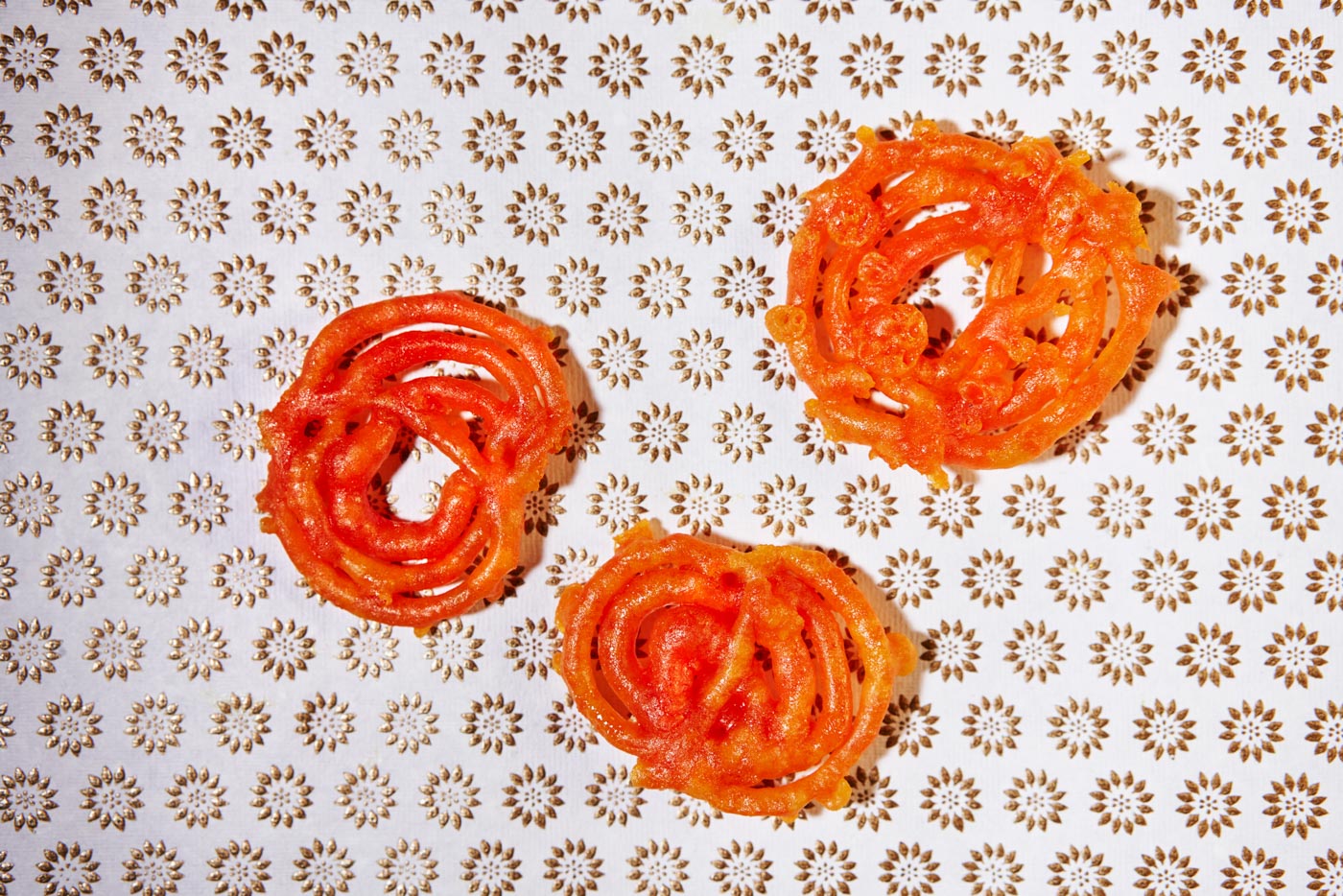
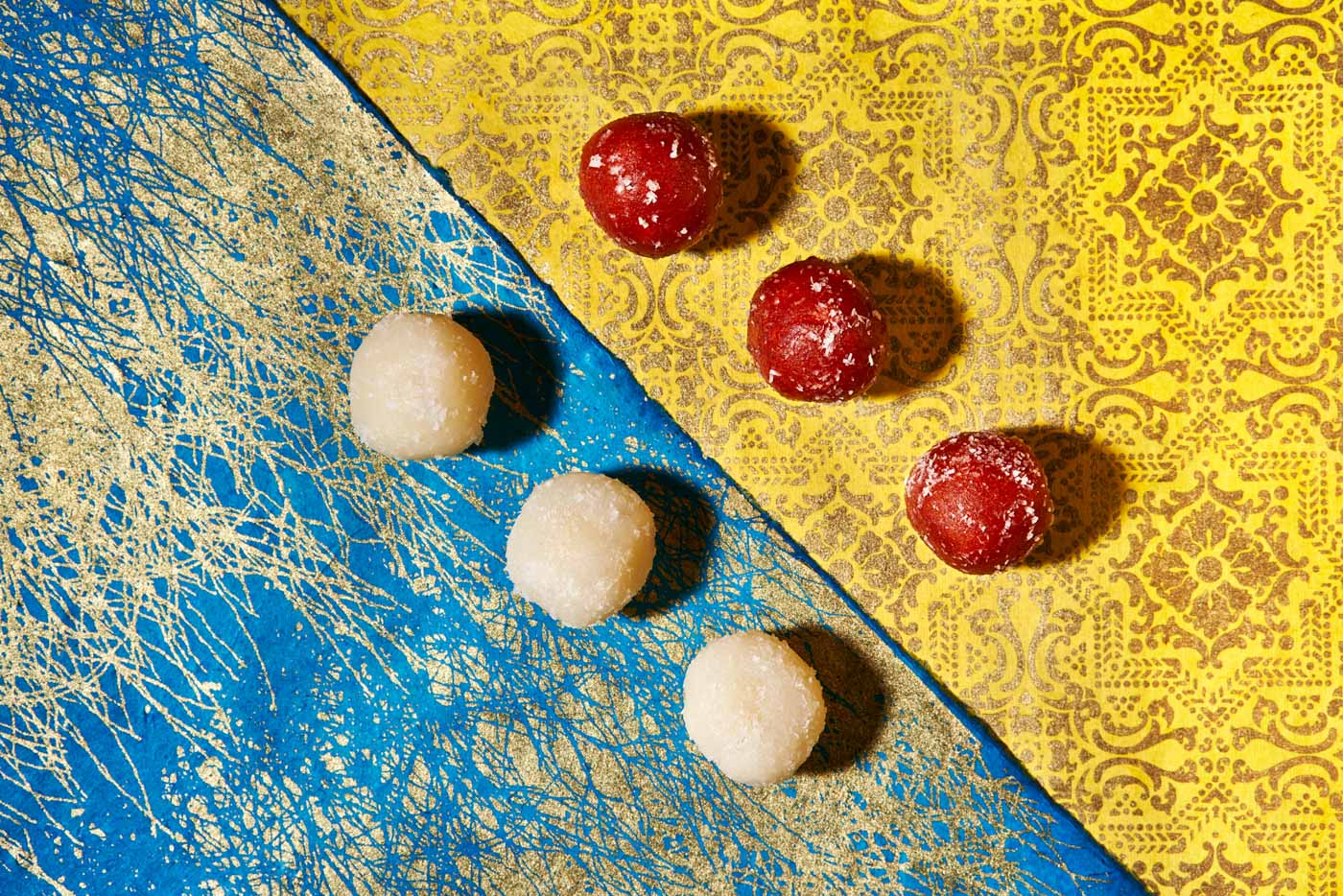
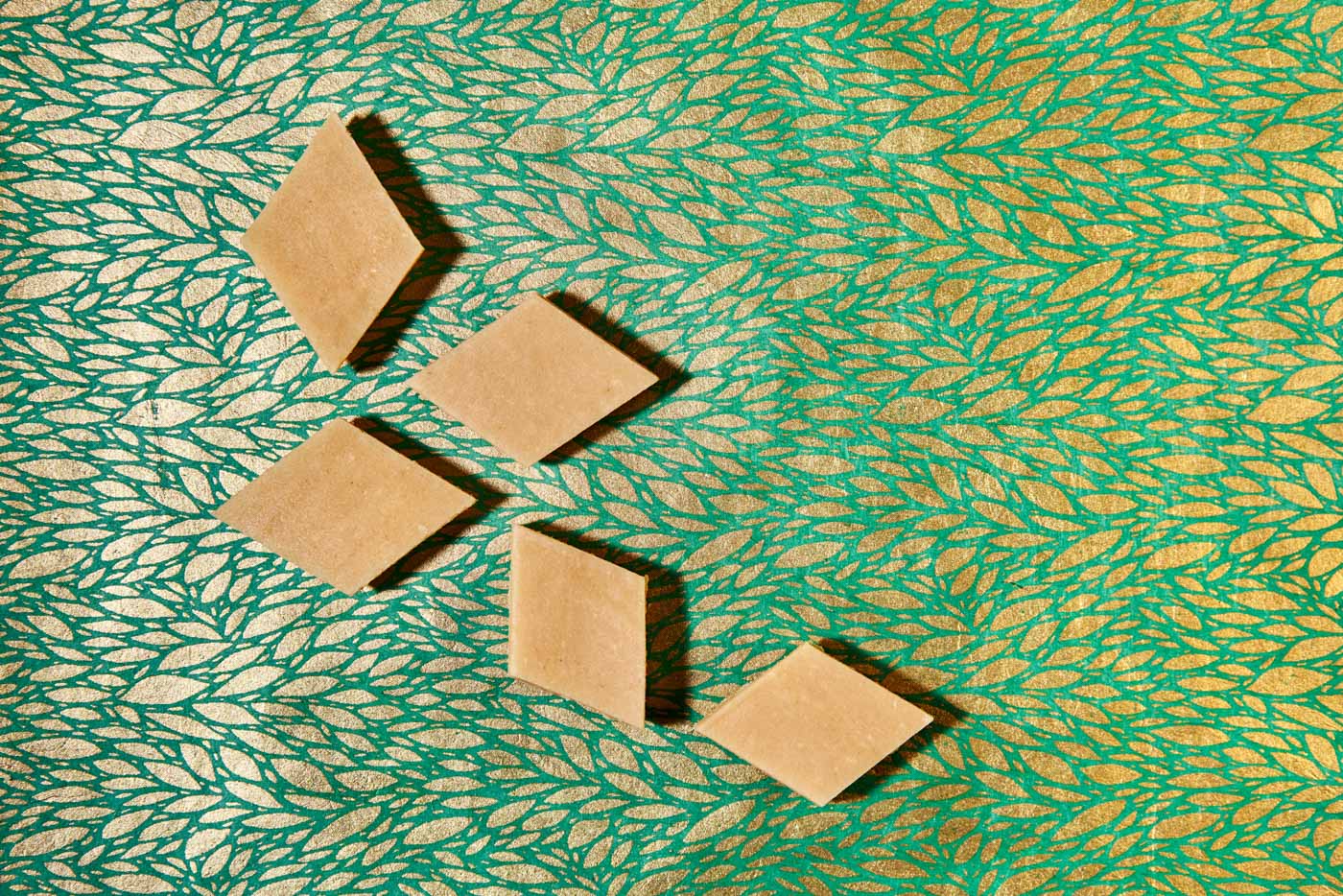
Nibbling on the last bit of my fudge-like confection covered in sliced almonds—a customary and courteous sample—I’m feeling satisfied and ready for family tea time. As a kid, I’d watch my mom transform from her sweet, passive self into a scrupulous critic of Indian sweets. Fellow Punjabi, Pakistani and Bengali aunties lined up in their vibrant salwar kameez and embroidered silk sarees, questioned freshness, haggled over price, and tsk tsk-ed when less than ideal pieces were selected, forcing the hand of the shopkeeper to make a swap. In a culture known for its hospitality and love of force-feeding guests, Indian sweets are the must-have South Asian food item during festivals, celebrations and family gatherings. From Diwali, Holi and Gurpurab, to birthdays, graduations and weddings, to friends stopping by for a cup of chai—the perfect accompaniment to these magical morsels—mithai is an integral part of commemorating happy moments with something sweet.
To get an understanding of why mithai is so beloved, we first need to acknowledge India’s role in sugar production. Around 8,000 B.C., curious natives of the Indian sub-continent discovered what lay within the husk of the sugarcane reed: a succulent (and chewable) fibrous interior that was tooth-achingly sweet. Even today, vendors operate hand-cranked or diesel-run sugarcane presses mounted on carts, selling juice by the glassful.
Fast forward 7,500 years or so, descendants of those natives boiled the liquid down until it became concentrated, allowed it to cool and solidify, and voila! Molasses-coated sugar crystals were born. This traditional raw sugar, known as gur or jaggery, was mixed with other staple ingredients like milk, rice, flour and ghee (clarified butter). It was offered to the gods while also satiating not-so-secret sugar cravings. Sugar has remained a steadfast passion in India for millennia, and a lucrative one at that. Today, the subcontinent is the second largest producer of sugar in the world and one of the leading global exporters of this commodity.
The long history of India’s cuisines has been greatly influenced by outside civilizations—specifically Persians and Mughals—who left a substantial imprint on the nation’s menu. In the seventh century, Arab traders settled along the southwestern fringe of India, known as the Malabar Coast, setting off centuries of migration. Muslims, Syrian Christians, and even Jews made a home for themselves in this region, as well as the western states of Gujarat and Maharashtra, mixing the flavors of their homelands with indigenous ones. But it was the Mughal Empire, funneled through the Khyber Pass, who would overthrow kings and have one of the greatest impacts on Indian culture.
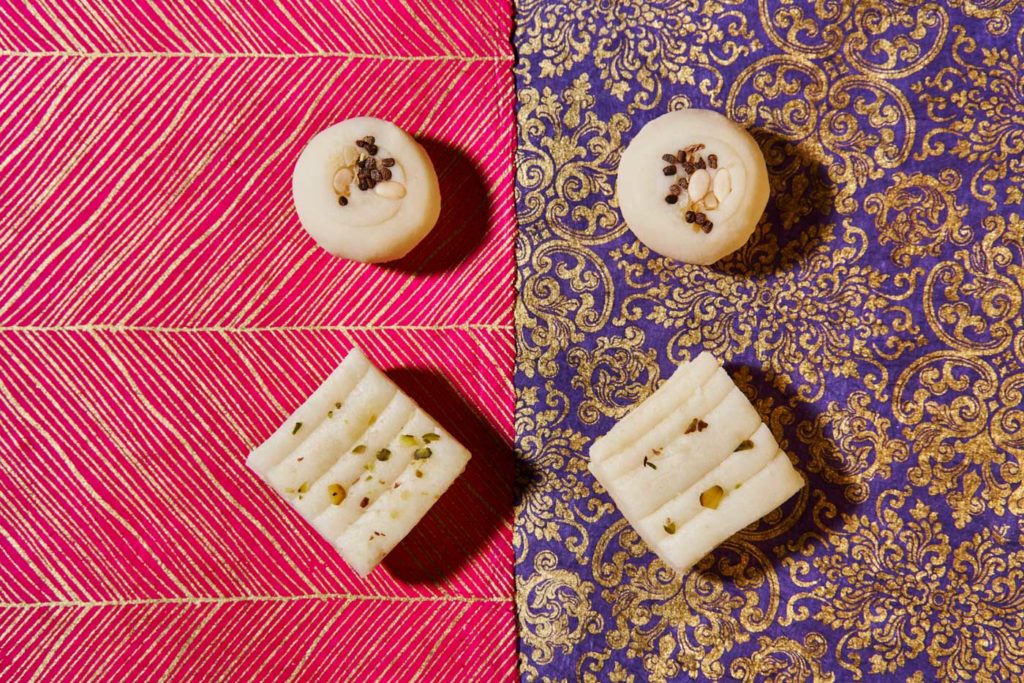
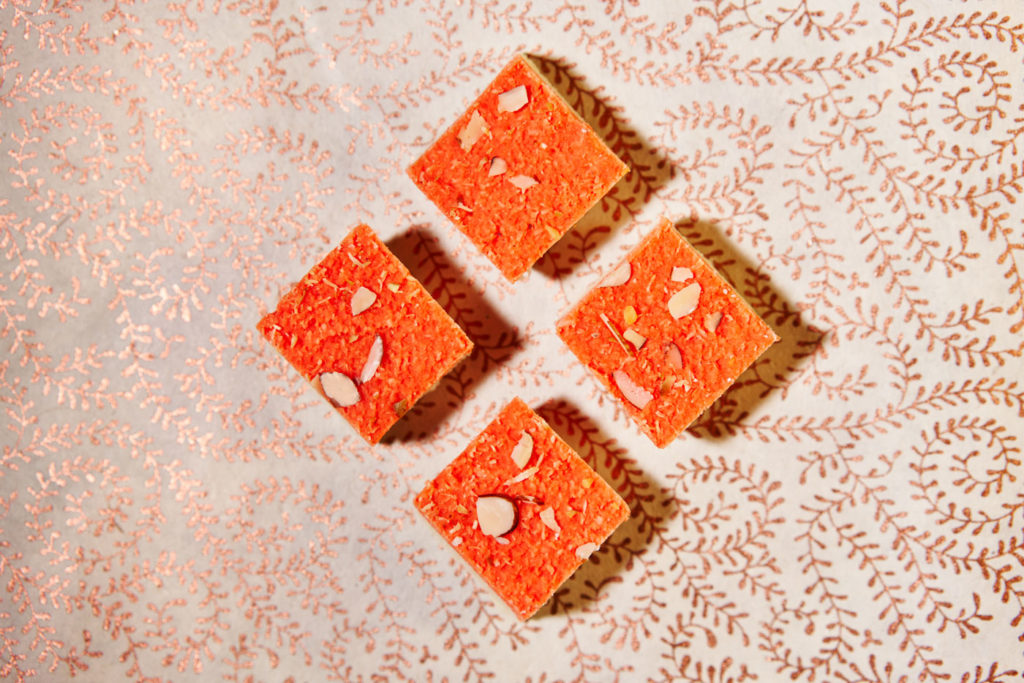
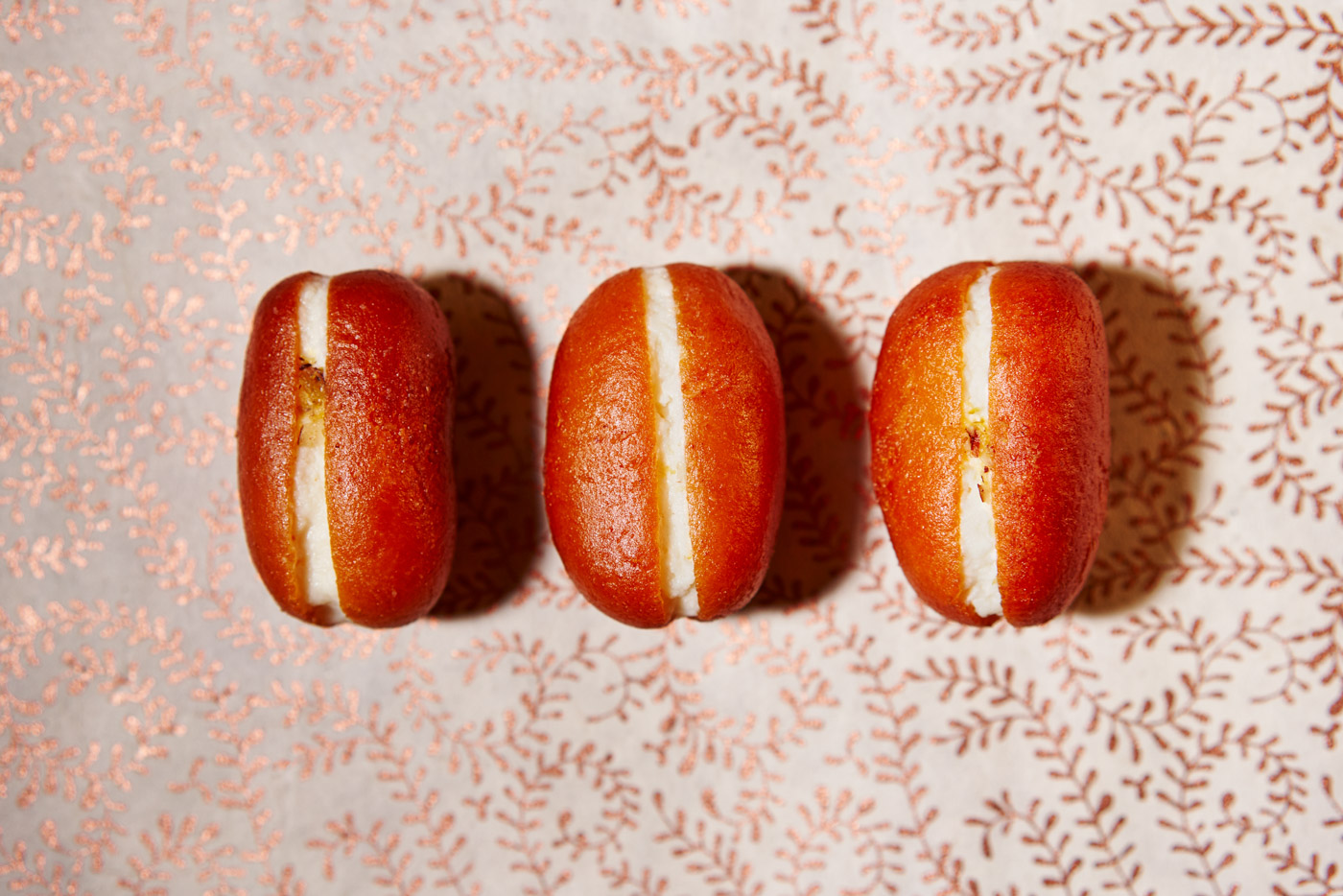

Aside from the religious persecution, forced conversions, and general horrors of an invading civilization, the Muslim conquest between the fifteenth and nineteenth centuries brought enormous influence in architecture, art, fashion and food. Saffron, nuts, dried fruits, and rose water were now at the fingertips of confectioners and home cooks alike. Some of the most popular Indian desserts have roots in the Middle East: the fried, saffron-infused batter of the jalebi with sticky syrup coursing through its coils; the icy yet creamy, cardamom-laced frozen treat known as kulfi; or the more sensational falooda, a concoction of silky vermicelli noodles layered with rose-scented syrup, milk, soaked basil seeds, and, when feeling indulgent, ice cream. Halwa, another Mughal import, is a mixture of semolina flour or nut butter, sugar and ghee. But it was the Punjabis of Northern India who tossed out the flour and nut butter, and subbed in carrots and milk—cooked until soft and thick—to create gajar ka halwa or gajrela, the most famous of all halwas.
For centuries, milk has been the cornerstone of creating mithai in India; there is even a sweet called “milk cake.” Boiled and reduced, broken and separated, the versatility of milk—and inventiveness of locals—has spanned countless generations. One of the earliest Indian desserts, believed to date back two thousand years, is kheer or payasam or payesh—all meaning “milk” in different regions and languages. Considered an auspicious sweet, kheer is a simple preparation of milk, rice or seviyan (vermicelli), sugar and cardamom. Slivered almonds and raisins are commonly tossed in to liven things up—just like my mama makes it—although cashews, pistachios and saffron are also delicious alternatives and additions.
Khoya or mawa is milk that is boiled repeatedly and condensed until only granular solids remain. The candy-like paste—India’s answer to preserving milk in a warm climate—is rich in lactose, protein, calcium and butterfat. It is the key ingredient in kalakand as well as in some barfi. Commonly crafted from condensed milk and sugar, the variations of barfi are plentiful. Badam (almond), pista (pistachio) and kaju (cashew) are some of the most popular options—similar in texture and sweetness as marzipan and fudge. They can also be made with only a nut base, a milk-free alternative in the land of dairy. Barfi made with besan (chickpea flour) roasted in ghee and mixed with cooked sugar is straight-up comfort food, one my mom and nani made often, especially during the colder months. Take a bite of besan barfi and a swig of hot chai and you’ll have a swirl of nutty, buttery deliciousness.
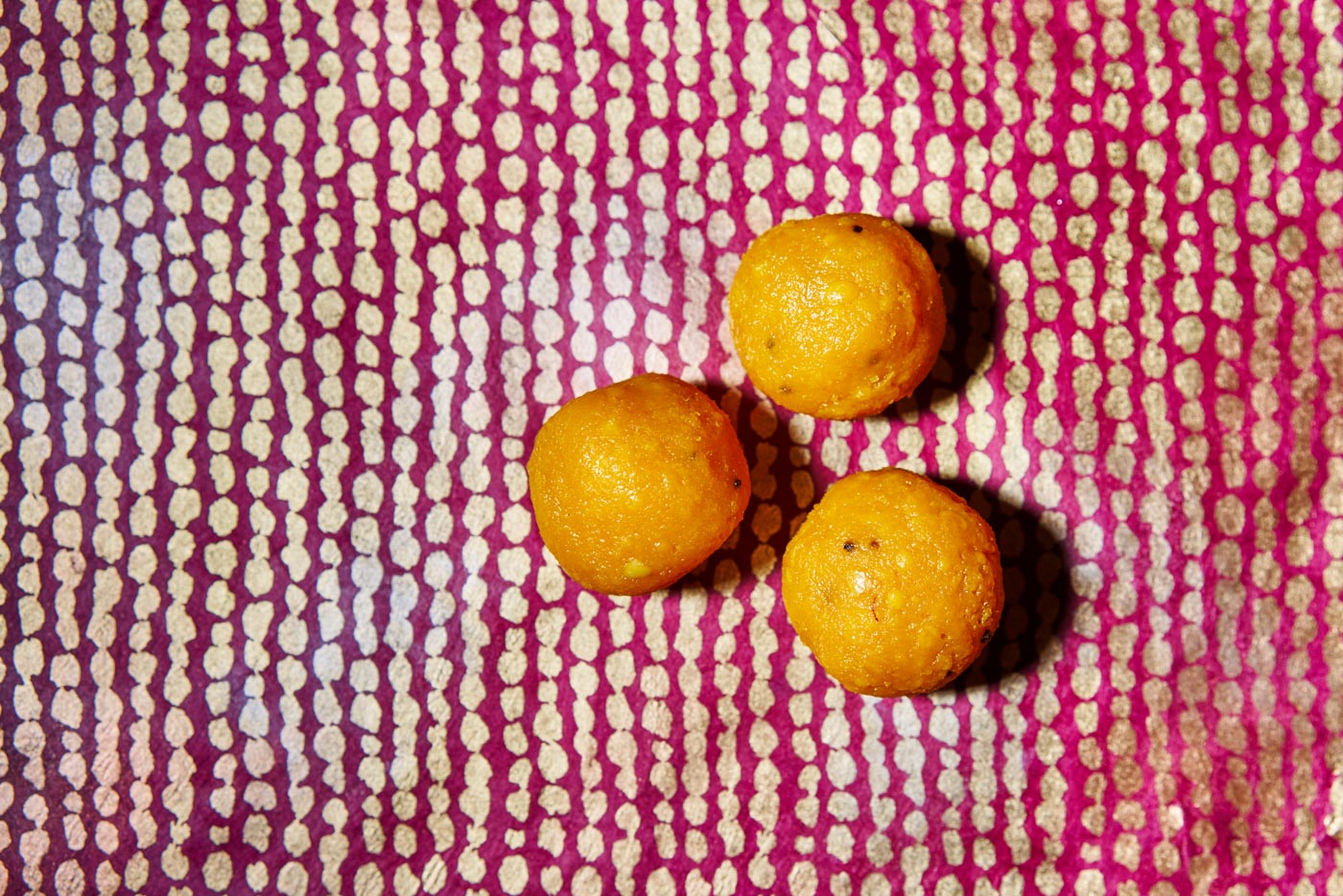
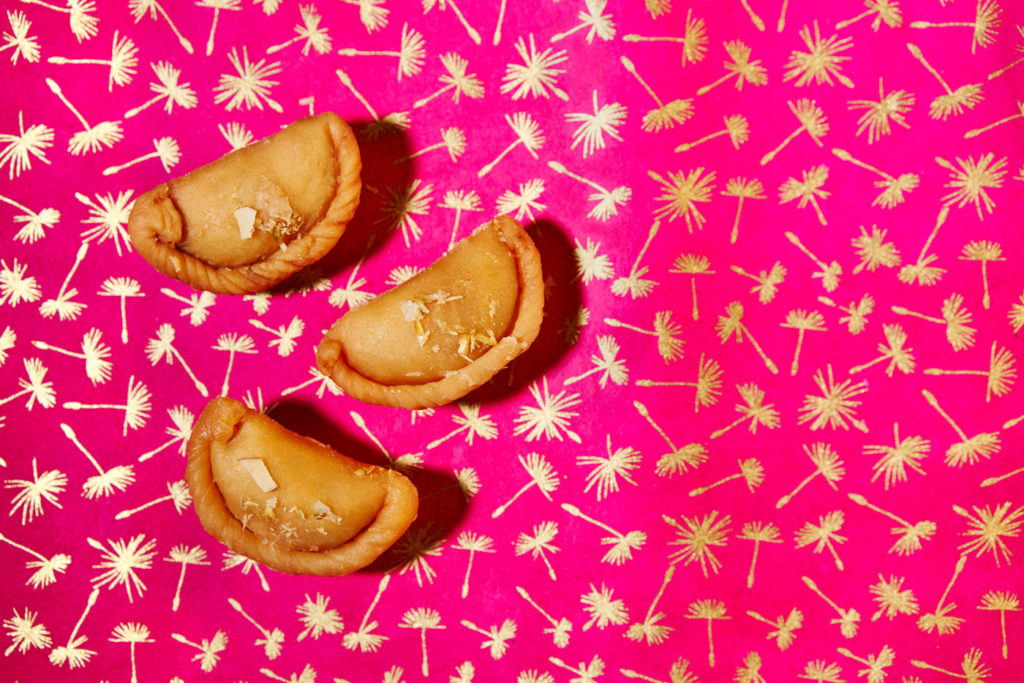

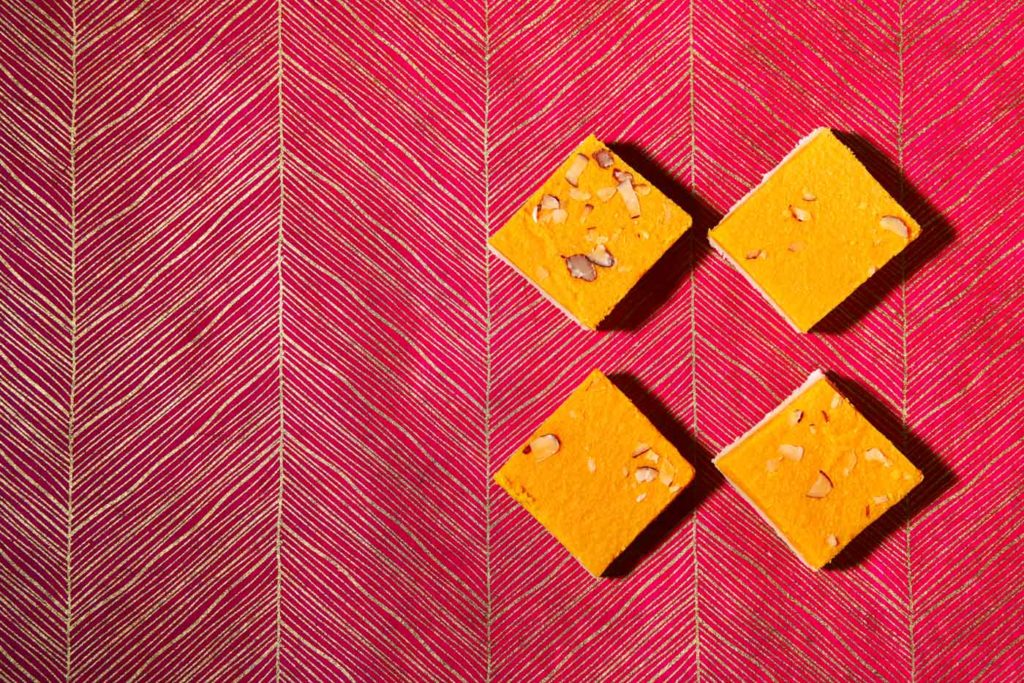
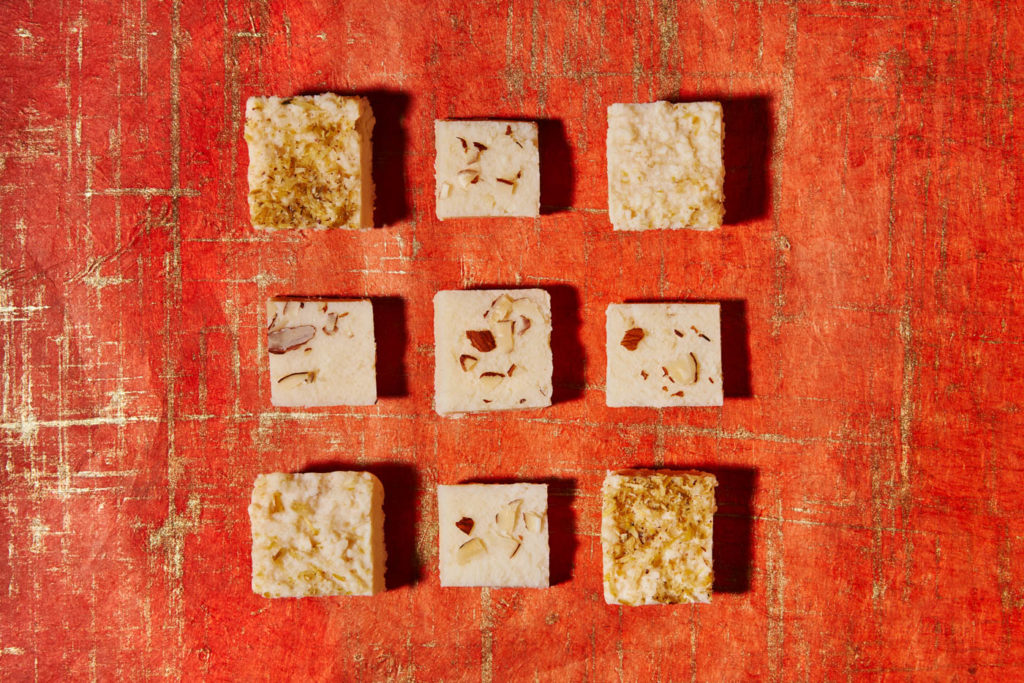
Fresh, soft cheese—called chenna in Bengali and paneer in Hindi and Punjabi—is the base for some of the most well-known Indian sweets. Milk is boiled and curdled, the solids separated from the whey and hung in a cheesecloth to drain. Then the fun happens. The drained curds are kneaded and rolled into balls, boiled in sugar water, and drowned in syrup—called chasni—to create rasgulla: orbs of sweet cheese, spongy, soft, and gushing with sappy goodness.
Rasmalai (hands-down my favorite Indian dessert) are flattened disks of paneer cooked in the same manner but bathed in a rich, sweet milk sauce scented with cardamom and rose water, and sprinkled with crushed pistachios. Cham cham—ovoids in playful pink, green, yellow and white—are also made with this sugar-rich cheese, then finished off in a coating of coconut flakes. These Bengali creations have become so popular, they’ve blurred state lines and are now representative of the entire nation.
In fat lies flavor, and Indians are not shy about slathering it on or dumping it in. Milk fat, nut fat, butter and oil are key ingredients in mithai-making. From deep-fried gulab jamun, pillowy dumplings sodden with syrup and eaten best when fresh and hot; to rotund ladoos composed of sweet, fried beads of besan called boondi, semolina flour, lentil flour or coconut; to Mysore pak, a South Indian delicacy loaded with ghee; to rabri which is, essentially, sweetened milk cooked until condensed—our love of high-calorie, blood-sugar-spiking desserts is ingrained in our DNA.
Moo mitha karna (“to sweeten the mouth”) is how Indians use mithai to share warmth and good wishes, the proverbial cherry on top of merry moments. These sweets can be dressed up and plated with precision to meet the standards of lavish, days-long wedding festivities, and dressed down for a solitary moment with a steaming cup of chai. “Indian sweets” may be a generalized term meant to encompass the breadth of items in this category, but there is beauty in this simplification: in the end, in every last crumb, it’s about sweetness from the heart.
——
Bone Deep is an ongoing column in which contributor Deepi Ahluwalia digs into her curiosities about food, exploring its historical and global significance.





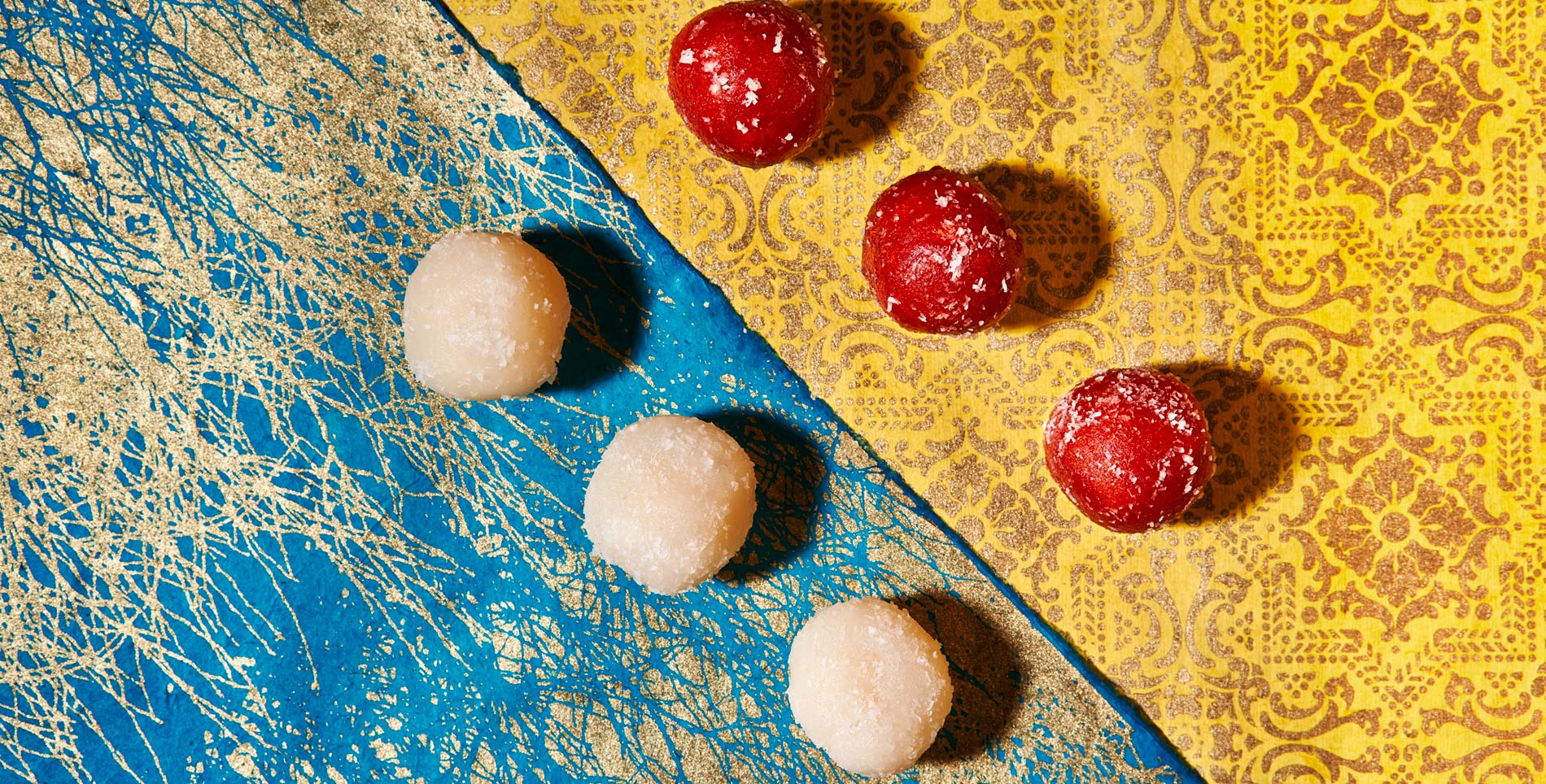

Our comments section is for members only.
Join today to gain exclusive access.